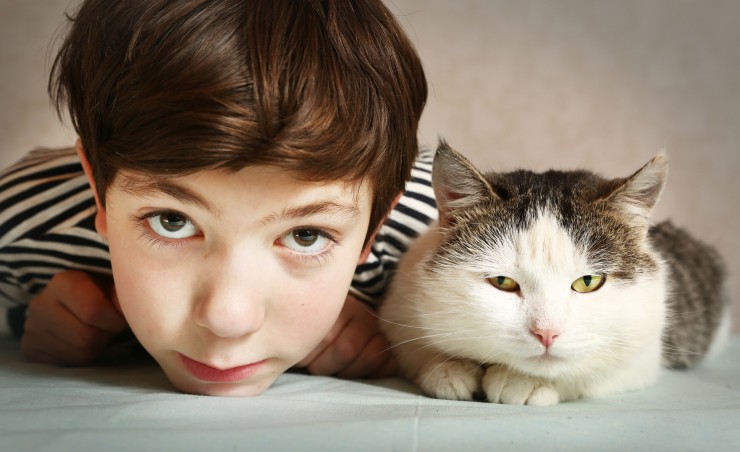

Cats are the UK’s most popular companion pets, beating dogs by a small but significant margin. This means that by the time children reach primary school age, they will probably have seen and met plenty of cats already, either at their friends’ houses or their own, if you have cats at home.
However, even if your child has got on well with the cats that they have met or your own cat and your child enjoy each other’s company, it is important to teach your child some basic pieces of advice about how to treat cats, how to read their signs and cues, and how to tell when a cat is unhappy!
In this article, we will share ten important things that all children of primary school age should know about cats, in order to ensure that they don’t get scratched or scared by a cat, and that they do not scare or mishandle any of the cats that they happen to meet either! Read on to learn more.
First up, many children who do not have a cat at home only have their experiences of dogs as a frame of reference, and it is important to make sure that your child understands the distinction between cats and dogs! Dogs are more playful, robust and outgoing, and more likely to approach children or be interesting in saying hello to them, while cats are entirely more speculative and calm.
Additionally, while cats can be boisterous, playful and sometimes play quite roughly, they are also more delicate than dogs, with fine limbs and bones, and they really do not tolerate being pulled around, manhandled, or picked up in the wrong manner or when they are not in the mood!
It is important to teach children how to read the signs and warnings that cats will give off when they want to be left alone or they have had enough attention, including the obvious ones like hissing, growling and getting their hackles up. But it is a good idea to teach children about other indicators too, such as if the cat simply goes quiet and their posture becomes tense, or if they stop purring all of a sudden, or swish their tail.
One thing that can be hard to teach children is where on the cat’s body to stroke them, because all cats are different and have different preferences! Start by teaching the child to hold their hand out to the cat to sniff before petting them, and then to stroke them gently on the sides and top of the head and the neck, and to never rub their fur the wrong way.
From there, your child will need to combine what they have learnt about cats’ warning signs in terms of judging where and how firmly to stroke each cat-but warning your child to steer clear of trying to pet the cat’s tummy is usually a good idea!
When a cat has had enough fuss, they will likely walk off rather lashing out or biting for the sake of it, and you should teach your child that when the cat does walk off, to let them go-never trap the cat in a corner or pursue them after they have left.
Cats like to do things on their own terms, which means that the best way to befriend a cat is by encouraging the cat to go to them, rather than trying to pick the cat up. Avoiding eye contact, speaking encouragingly and maybe offering a treat are all good ways to do this-as well as of course being calm and quiet!
Cats do not like a lot of noise and frantic activity, and so running around and shouting is a good way to scare a cat off! Teach your child that to make a cat feel comfortable and not scared, they will need to be calm and quiet, and probably need to show a little patience!
It is also important to teach your child that not all cats want fuss and attention-some cats may be shy, nervous or have had a bad experience with a child before, which will make them keep away. If this is the case, your child will have to learn that the best they will get is admiring the cat from afar, and trying not to upset them!
When cats are purring, they tend to treadle with their front feet, and as they do this, their claws come out and grip on! This is natural and a sign of a happy cat, rather than any form of aggression, but those sharp claws can still hurt! Teach your child that this feline behaviour is comfort and not anger, and to avoid being scratched, having a blanket on your lap or wearing a thick jumper can help.
Teach your child to have respect for the boundaries that all cats have-if a cat is eating or retreating, give them their space. It is also important to ensure that if your child is lucky enough to see a litter of kittens with their mother, that they should always approach the mother cat first and ensure that she is comfortable before attempting to handle the kittens, and if the mother cat is defensive or unfriendly, to leave them alone.
 Playful Breeds Of Dogs
Playful Breeds Of
Playful Breeds Of Dogs
Playful Breeds Of
 Pet Insurance : Five Ways To Keep Your Policy Cost Down Without Compromising On Coverage
Pet Insurance : F
Pet Insurance : Five Ways To Keep Your Policy Cost Down Without Compromising On Coverage
Pet Insurance : F
 An Introduction To The Four Sennenhund Dog Breeds
An Introduction T
An Introduction To The Four Sennenhund Dog Breeds
An Introduction T
 Rubbing Butter On Your Cats Paws When You Move Home - Fact Or Fiction?
Rubbing Butter On
Rubbing Butter On Your Cats Paws When You Move Home - Fact Or Fiction?
Rubbing Butter On
 Dog Breed Traits That Can Influence Temperament And Behaviour
Dog Breed Traits
Dog Breed Traits That Can Influence Temperament And Behaviour
Dog Breed Traits
Copyright © 2005-2016 Pet Information All Rights Reserved
Contact us: www162date@outlook.com